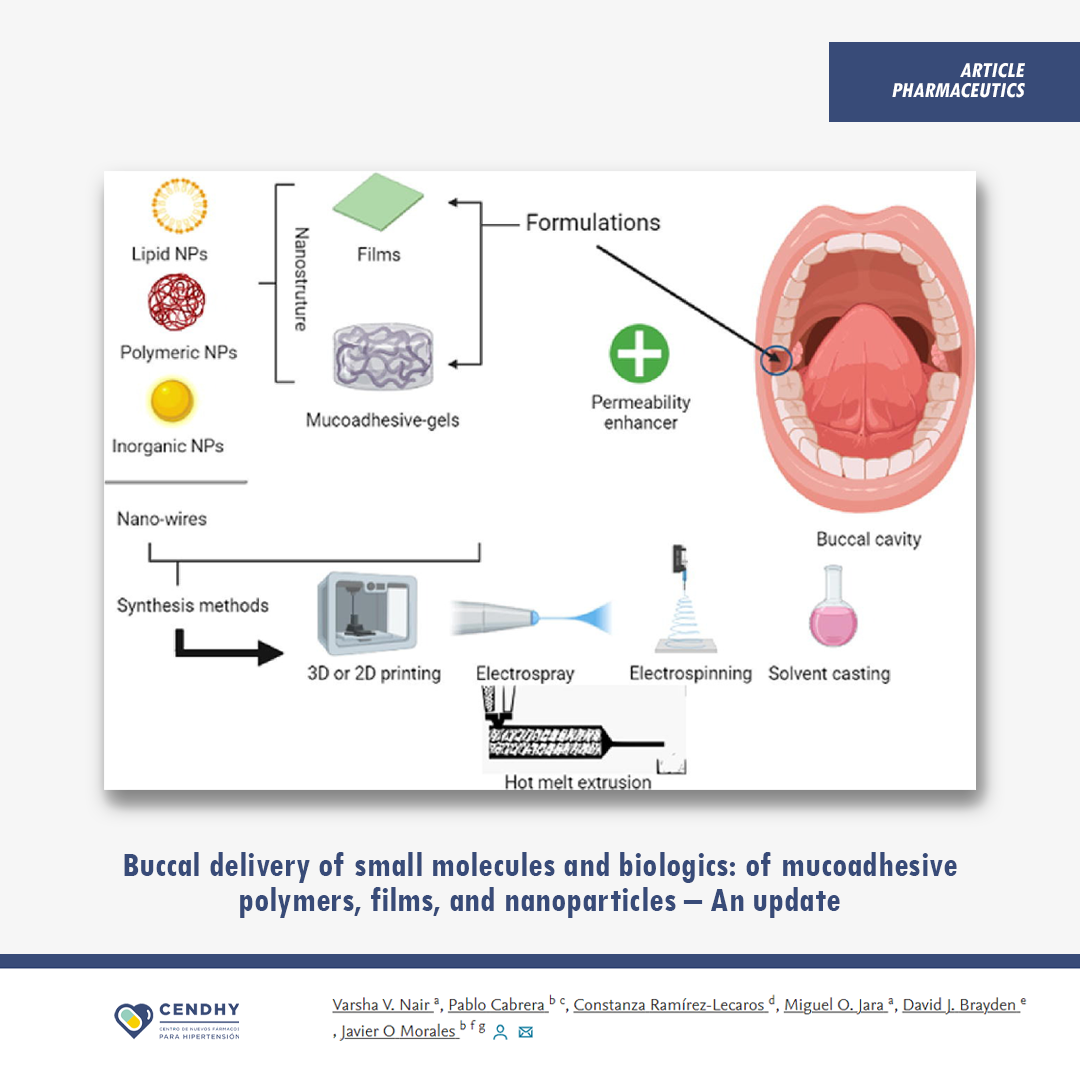Abstract
Buccal delivery of small and large molecules is an attractive route of administration that has been studied extensively over the past few decades. This route bypasses first-pass metabolism and can be used to deliver therapeutics directly to systemic circulation. Moreover, buccal films are efficient dosage forms for drug delivery due to their simplicity, portability, and patient comfort. Films have traditionally been formulated using conventional techniques, including hot-melt extrusion and solvent casting. However, newer methods are now being exploited to improve the delivery of small molecules and biologics. This review discusses recent advances in buccal film manufacturing, using the latest technologies like 2D and 3D printing, electrospraying, and electrospinning. This review also focuses on the excipients used in the preparation of these films, with emphasis on mucoadhesive polymers and plasticizers. Along with advances in manufacturing technology, newer analytical tools have also been used for the assessment of permeation of the active agent across the buccal mucosa, the most critical biological barrier and limiting factor of this route. Additionally, preclinical and clinical trial challenges are discussed, and some small molecule products already on the market are addressed.
See the full publications in the following link


0 comentarios